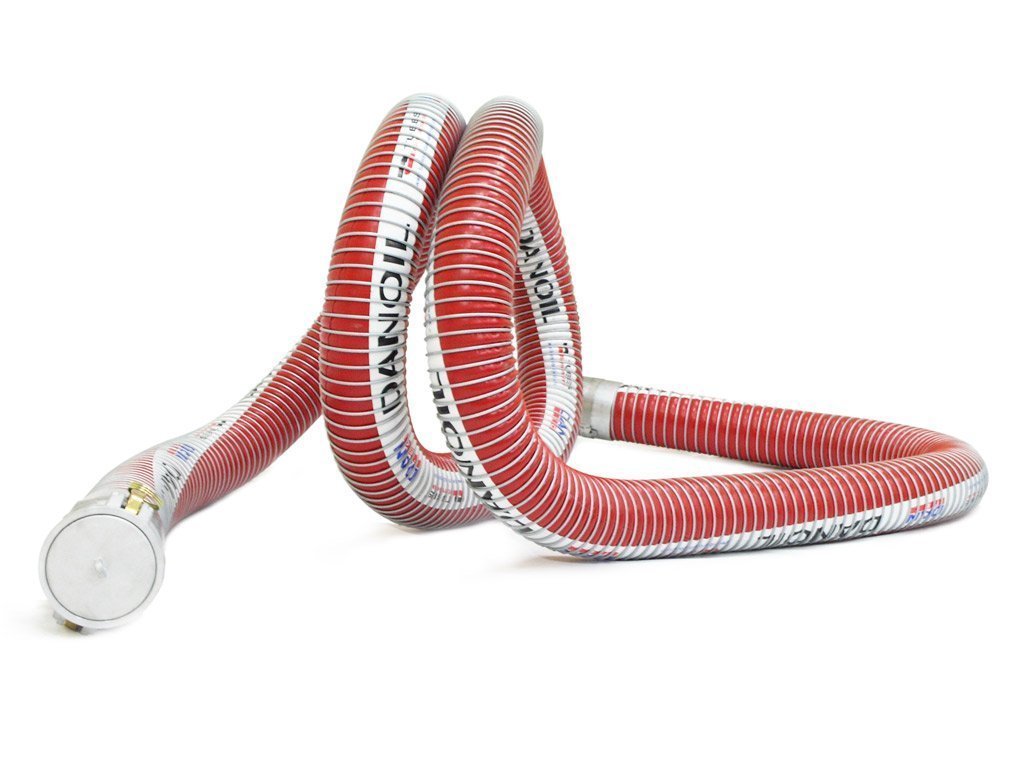Composite hoses


The composite hose consists of:
- inner wire helix;
- outer wire helix;
- multiple layers of fabric and foil wound between these helices.
Together, they form a pressure resistant and vacuum resistant, leak-proof package. Both inner helix and inner fabric and foil layers must be chemically resistant to the flowing medium. The inner hose layer (foil, fabric) is made of the following materials:
- polypropylene (fuel and chemical hoses);
- polyamide (fuel and biofuel hoses);
- ECTFE (fluorine polymer similar to Teflon, hoses for very aggressive chemicals);
The wire of the internal helix is made of the following materials:
- zinc-plated carbon steel (galvanized, designation G, for fuels);
- aluminium (designation A, for fuels, very lightweight hoses);
- carbon steel coated with polypropylene (designation P, for chemicals);
- carbon steel coated with polyamide – nylon (designation N, for biofuels, jet fuel);
- AISI 316 stainless steel (designation S – for chemicals, biofuels and jet fuel, cryogenic fluids);
Different types of fabric (polyester, aramid) can be used as reinforcement. The outer layer is normally made of PVC-coated fabric, which is resistant to abrasion and weather conditions (option – polyamide fabric).
The wire of the outer helix is made of the following materials:
- zinc-plated carbon steel (galvanized, designation G);
- polypropylene-coated carbon steel (designation P);
- AISI 316 stainless steel (designation S)
A given type of hose can be made with different combinations of inner and outer helix materials, e.g. DANCHEM PG stands for DANCHEM hose with an inner helix coated with polypropylene and an outer helix made of zinc-plated steel.
Basically, the composite hoses can be divided into chemical and fuel hoses. Highly specialized hoses for certain, very specific applications are also available e.g.:
- hoses for hot oil 100°C;
- hoses for various types of biofuel;
- floating roof drain hoses fitted inside storage tanks with petroleum products;
- low-temperature hoses for cryogenic fluids (LPG, carbon dioxide, ammonia, ethylene);
- hoses used for liquid sulphur and bitumen
- light vapour recovery hoses for the extraction of vapours from tanks and tankers;
flame retardant version of any basic hose – FIRESAFE

